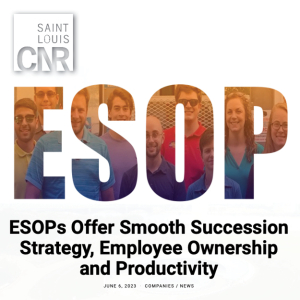ESOPs Offer Smooth Succession Strategy, Employee Ownership and Productivity
 June 6, 2023 | Employee Stock Ownership Plans – ESOPs for short – are a growing trend that construction companies and others are embracing as a means of ensuring a smooth ownership succession pathway, positive company culture and a true sense of ownership and pride among employees.
June 6, 2023 | Employee Stock Ownership Plans – ESOPs for short – are a growing trend that construction companies and others are embracing as a means of ensuring a smooth ownership succession pathway, positive company culture and a true sense of ownership and pride among employees.
ESOPs combine the financial interests of the employees with those of the original shareholders so that teamwork and a long-range investment perspective toward the business are in everyone’s interest. ESOPs are often selected as an option wherein owners of a family business can transition from the business, in whole or in part, while rewarding their employees with full or partial ownership of the company. It’s an alternative to selling the business outright to an external buyer. The beauty of the ESOP for an employee is that the company contributes 100 percent of the dollars to fund the plan.
Productivity, profitability, liquidity, a tax-free sale, tax deductibility in repaying debt and other plusses belong to businesses who opt to form an ESOP.
Construction companies account for 13 of the firms listed on the National Center for Employee Ownership’s top 100 employee-owned firms, with 85 percent of those 13 using an ESOP rather than another employee ownership option such as profit sharing to achieve broad company ownership.
Brad Dunn, executive vice president of Cee Kay Supply Inc., the largest family-owned independent distributor in the Midwest for industrial gases, welding equipment and dry ice, says the firm formed its partial ESOP in 2021 to extend 49 percent stock benefits to its 135 employees. Fifty-one percent of the company remains family owned. A third-generation family business, Cee Kay Supply is celebrating its 75th anniversary this year.
“My father was always very retirement benefit focused for the employees,” said Dunn. “He believed strongly that it was the employees who built the business and led to its success, and he wanted to reward them. He also wanted to provide a framework for the next generation, myself and my siblings, to align ourselves with the success of the company and have the ability, over time, to facilitate a future sale, if needed.”
Like other ESOPs in St. Louis and elsewhere, Cee Kay Supply’s ESOP also has a traditional 401(k) retirement plan where the firm matches employees’ contributions. “The ESOP has really helped us in recruiting and retention,” Dunn said.
In addition to the ESOP, the company rolled out another program this year that is an owner profit share. Every calendar quarter, all eligible employees will receive an equal contribution non-tax-sheltered percentage of the company’s revenues along with their regular paycheck. “As long as you were working on the first day of the calendar quarter, you’re eligible,” Dunn said. “We did this because we wanted to offer employees a blended benefit, not just the longer-term retirement benefit.”
S. M. Wilson & Co.’s ESOP started in 2005. In 2014, the company became 100 percent employee owned. CFO Mike Mangiore said the move was part of former CEO Scott Wilson’s succession plan. “Scott had a good bit invested in the company that his grandfather started in 1921,” Mangiore said. “He could have sold it externally or to a limited number of existing S. M. Wilson employees. He chose the employee ownership pathway and we started buying him out.”
Chief Marketing Officer Amanda Bohnert remembers the ESOP conversations years ago. “I remember sitting in this meeting when we discussed the ESOP strategy,” she said. “It’s a great way to energize and inspire all of us to grow this company. We all have a piece and part of it, and now we’re all part of that Wilson legacy. It was and is an amazing thing to come to work everyday and know that you’re a stock owner and have the opportunity to directly impact the success of the company.”
Mangiore says ESOP participants must be full-time, salaried employees. Some 110 S. M. Wilson employees are currently part of the ESOP. The firm’s ESOP is structured as an internal 15-year loan that holds the shares in suspense. The shares of those who have retired or left get put back into the ESOP. Full vesting occurs at five years.
“Every year our company is evaluated by a third party and it determines our stock price,” Bohnert said. “It recommends our stock value price and the ESOP trustees validate that price.
If a company is debating whether or not to form an ESOP, there are several questions it should ask, according to Mangiore. First, what is the owner’s exit timeline? Second, what does the owner/founder want his legacy to be? Third, how much money does the owner seek to pull out of the company? Fourth, is there a family member or other primary individual that the owner wants to pass the business to? Fifth, does the owner/company have money in the business to pay out the previous shareholders, or does the owner have the ability to borrow money to make this happen?
The tax benefits of forming an ESOP are attractive if it is structured correctly, according to Mangiore. “If the company is owned by a stock ownership trust, 100 percent of it is tax exempt,” he said. “If a company is structured as an S Corp or other pass-through entity, its profits become tax free.”
Contegra Construction Co. is also an ESOP. COO Jim Mundy says the firm had been discussing the possibility of forming an ESOP for three years and made it official in September 2022. “It was a natural progression for the next level of leadership to step up and take some of the reins, ensuring the success of the company into perpetuity,” Mundy said. “It wouldn’t have been right, considering our company culture, to sell the company. We wouldn’t have been able to do that and maintain the values that are important to all of us.”
Employees must work at Contegra for one year before they’re eligible to participate in the ESOP. Mundy says there are more than 70 currently enrolled. “We have had some good years over the past five years, and we’re growing,” he said. “Forming the ESOP was an opportunity to build on that momentum. We hire individuals who aremotivated self-starters and very entrepreneurial. The people who work at Contegra think like owners. Anybody has access to everybody in the company. That’s our culture. So this was a natural fit.”
Terracon’s ESOP has been in place since 1991. Jason Guilford, St. Louis department manager of materials services, says approximately 5,600 of the company’s more than 6,000 employees globally – full-time, hourly and part-time – are members of the ESOP.
“From my experience, our ESOP really helps reduce employee turnover and helps us hold onto quality employees,” Guilford said. “No doubt being part of our ESOP adds to employee satisfaction and productivity. It’s comforting to know that decisions made at the corporate level are made with all of us in mind for the greater good of all our shareholders.”
According to company rule, no Terracon employee owns more than two percent of the firm. Jamie Weaver, senior client development specialist for Missouri and Illinois, says Terracon just reached $1 billion in companywide revenues and it increased the company’s stock price. “We attend a companywide shareholders’ meeting twice a year where we talk about incentives, what we’ve accomplished and its effect on our stock prices,” Weaver said. “It really adds to our motivation. And when that new company valuation comes out, there’s a positive buzz across the firm.”
Lawrence Fabric and Metal Structures’ ESOP formed in October 2015 with 58 employees. The company’s previous owner was retiring and wanted an exit strategy that would maintain business operations, company culture and the management team. As Lawrence investigated the ESOP as an alternative to selling to a third-party owner, it appeared to be a solid option that fit the firm’s size and future goals. There are now close to 80 employees, and a number of retirees are reaping the benefits of being former participants. Similar to the 401(k) plan, the vesting period for the ESOP is six years.
“Employees are truly thinking like owners and have a vested interest in their future at Lawrence,” said President Mike Bowman.
Dan Dillon is senior vice president and treasurer at McCarthy Building Companies, Inc. In 1996, McCarthy family created the ESOP and the family started selling shares to employees. In 2002, the last family member sold his remaining stake in the company and McCarthy officially became 100 percent employee owned.
“A lot of construction companies become ESOPs,” Dillon said. “With the nature of what we do, jobsite teams work closely together and become like a family. There’s definitely a camaraderie.”
Dillon remembers former Chairman Mike McCarthy’s words about his decision to transition from family to employee ownership. “Mike thought about the firm’s core purpose – to be the best builder in America – and asked himself what kind of company has the potential to achieve that goal,” Dillon said. “As owners, he believed, we develop deep relationships with our trade partners, suppliers and others, and he felt strongly that transferring the ownership responsibility to the employees in order to develop the next generation of leadership was essential.”
Nearly 3,000 McCarthy employees belong to the company’s ESOP, according to Dillon, and that number is growing by a couple hundred employees every year.
“Apart from the financial component, our ESOP embodies the idea that we are stewards of the firm. This is our company, and we are each accountable to set up our business for success not only today, but for future owners. The ESOP supports our company culture and underscores that whatever we achieve, we are achieving together. This effort is reflected in not only the value of the shares we own but also represented in how we all behave every day with our clients and teams and through the results on our projects. There’s no gap between employees and owners. It’s a true partnership.”
Editor’s Note: This article, from the May – June 2023 print edition of St. Louis CNR, was inadvertently shortened during magazine layout. This is the complete article.
Article courtesy of Saint Louis CNR




